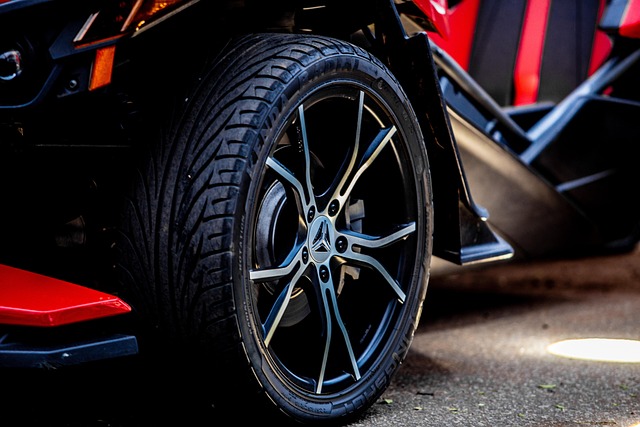Looking to register your car in California? This comprehensive guide walks you through every step, from understanding the process to scheduling your DMV VIN verification. We’ll detail the required documents, how to pass inspection, complete the registration form, and pay fees. Make sure your vehicle is up-to-code and ready for California’s roads by following these simple steps, ensuring a smooth and efficient registration experience.
- Understanding the California Car Registration Process
- Gather Required Documents for DMV Vin Verification
- How to Schedule and Pass Your Vehicle Inspection
- Completing the Car Registration Application Form
- Paying Fees and Receiving Your California Registration Papers
Understanding the California Car Registration Process

Understanding the California Car Registration Process
In California, registering a car involves several steps that can seem complex but are designed to ensure safety and compliance with state laws. The process begins with a comprehensive vehicle inspection, including a critical DMV VIN verification. This step is crucial as it ensures the vehicle’s identification number (VIN) matches the make, model, and year listed on the registration documents. A mobile vin inspection or vin inspection conducted by an authorized agent simplifies this process, allowing you to verify the VIN without having to visit a DMV office.
After successful DMV VIN verification, you’ll need to gather essential documents, including proof of insurance, vehicle ownership, and identity. Once these are ready, you can submit your application at a local California DMV office or, for added convenience, utilize their online registration services. The state will then issue a registration certificate, and you’re officially registered to drive your car in California.
Gather Required Documents for DMV Vin Verification

Before heading to the DMV for car registration, make sure you have all the necessary documents ready for a smooth dmv vin verification process. This typically includes your vehicle’s registration certificate from the previous state, proof of insurance, and a valid driver’s license. For a mobile vin verifier or mobile vin inspection, you’ll also need to provide the vehicle identification number (VIN) and ensure your car meets all safety and emission standards.
Additionally, California requires specific documents for certain vehicle types, such as proof of ownership for classic cars or motorcycles. It’s always a good idea to check with your local DMV branch in advance to understand any additional requirements. Having these documents readily available will save you time and potential inconvenience during the registration process.
How to Schedule and Pass Your Vehicle Inspection

To schedule and pass your vehicle inspection in California, the first step is to make sure your car meets all state safety and emissions standards. You can do this by scheduling an appointment at a DMV-approved inspection station or, for added convenience, opt for a mobile vin inspection service that comes to you. These services utilize advanced technology to perform a DMV vin verification, ensuring your vehicle’s compliance in the comfort of your own location.
During the inspection, a trained professional will check various components of your car, including lights, brakes, tires, and emissions controls. They’ll also verify the Vehicle Identification Number (VIN) to ensure it matches the data on record with the DMV. If all systems are go, you’ll receive a passing certificate allowing you to register your vehicle at the DMV without any issues.
Completing the Car Registration Application Form

To begin the registration process, you’ll need to fill out the Car Registration Application Form, which is available at your local California DMV (Department of Motor Vehicles) office or online. This form requires detailed information about your vehicle, including its make, model, year, and unique Vehicle Identification Number (VIN). It’s crucial to ensure the VIN is accurate, as it facilitates the dmv vin verification process, which cross-references your vehicle’s details against state records.
The application will also ask for personal information such as your name, address, and license plate number. If you’re opting for a mobile vin inspection or using a mobile vin verifier, some of this data can be pre-filled to save time. This method allows you to quickly and conveniently verify your vehicle’s history, ensuring all the necessary details are correct before submitting your registration.
Paying Fees and Receiving Your California Registration Papers

After submitting your application for car registration at the California DMV, the next step is paying the required fees. This typically includes a vehicle registration fee and a title fee, which can be paid online or in-person. Once your payment is processed, the DMV will conduct a DMV VIN verification to ensure the vehicle’s identification number (VIN) matches the details provided. This process is crucial for preventing fraud and ensuring the accuracy of registration records.
Upon successful vin inspection, you’ll receive your California registration papers, also known as a vehicle registration certificate and license plate. These documents are essential as they confirm your car’s legal status on California roads. You can opt to display these plates on your vehicle, which will allow you to legally operate it within the state. Additionally, many services like mobile vin verification or using a mobile vin verifier can help streamline this process by providing instant validation and reducing potential delays.
Registering a car in California is a straightforward process that requires understanding key steps like DMV VIN verification, gathering essential documents, passing vehicle inspections, completing application forms, and paying relevant fees. By adhering to these guidelines, you can navigate the car registration process efficiently, ensuring your vehicle is legally registered and ready for California’s roads.
